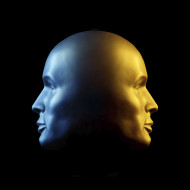
Beginning in March, MoveScape Center will offer a series of Red Thread courses centered on Rudolf Laban’s Choreutics. These courses combine body and mind, delving into the physics and metaphysics of human movement through space and time.
The series opens with a Tetra seminar focused on Laban’s posthumously published masterpiece, Choreutics. Out-of-print for many years, Choreutics is once again available in paperback through Princeton/Dance Horizons Books.
In the opening springtime Tetra, MoveScape goes retro with a correspondence course. Based on an easy schedule, participants will read the Preface, Introduction, and first 12 chapters of Choreutics.… Read More









